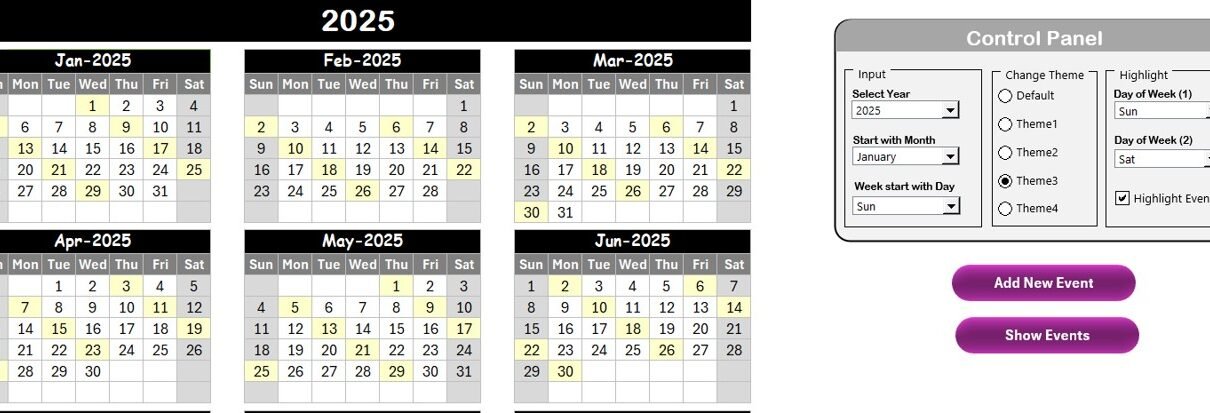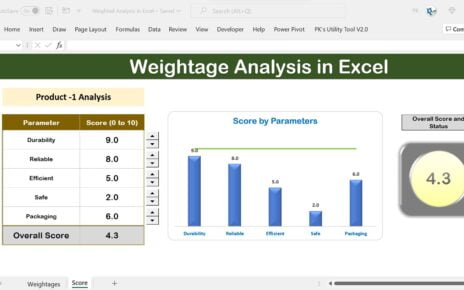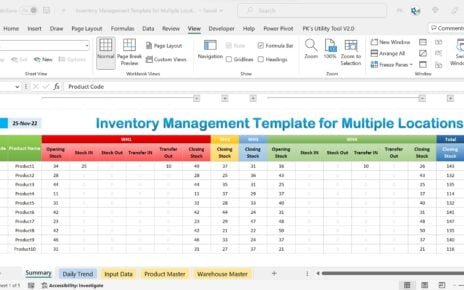In today’s fast-paced work environment, staying organized is essential to ensure that audits, meetings, and important events are properly tracked. Whether you’re managing audits for a business, school, or any other organization, a well-organized calendar is key to maintaining efficiency. Enter the Audit Schedule Calendar in Excel — a comprehensive, ready-to-use template that can help you stay on top of all your important dates. This Excel template includes everything you need, from event management to calendar customization, all within the familiar environment of Microsoft Excel.
Table of Contents
ToggleWhat is an Audit Schedule Calendar in Excel?
An Audit Schedule Calendar in Excel is a tool designed to streamline the tracking of audits, meetings, and other events that require timely scheduling. This template allows users to input, modify, and view events in multiple calendar views (Annual, Monthly, and Daily), making it an invaluable resource for planning and tracking tasks.
Why You Need an Audit Schedule Calendar
- Organizational Efficiency: Simplifies scheduling by providing a centralized space to keep track of all important dates.
- Customizability: Allows users to modify the calendar based on their specific needs, including event colors, themes, and highlighted days.
- Event Management: Offers an intuitive interface to add, view, and update events with ease.
- Streamlined Collaboration: Makes it easy to share schedules with team members for enhanced coordination.
Key Features of the Audit Schedule Calendar in Excel
The Audit Schedule Calendar in Excel comes equipped with five well-designed worksheets, each serving a specific purpose. Let’s explore the core features of each worksheet:
1. Home Sheet Tab: Your Index for Quick Navigation
The Home Sheet serves as an index or dashboard for all the other sheets in the template. With just a click, you can jump to any part of your calendar:
- Annual View button: Takes you directly to the yearly calendar overview.
- Monthly View button: Leads you to the monthly calendar for a more granular look at your schedule.
- Daily View button: Allows you to see a detailed list of events for any given day.
- Events button: Takes you to the database of all recorded events.
This layout ensures that no matter where you are in the workbook, you can quickly navigate to the section you need.

Click to Audit Schedule
2. Annual View Sheet Tab: A Yearly Overview of Your Schedule
The Annual View is where you get an overview of the entire year. It displays a calendar for all 12 months, making it easy to visualize your events throughout the year.

Click to Audit Schedule
Control Panel: At the top of the sheet, you’ll find a control panel with various customization options:

Click to Audit Schedule
- Input Group: Select the year, starting month, and starting day of the week for easy adjustments.
- Change Theme Group: Choose from five color themes to give your calendar a fresh look.
- Highlight Group: Highlight specific days of the week, such as weekends, or special events like holidays.
Add New Event Button: Select a date from the calendar, and click the “Add New Event” button to create an event directly on that day.
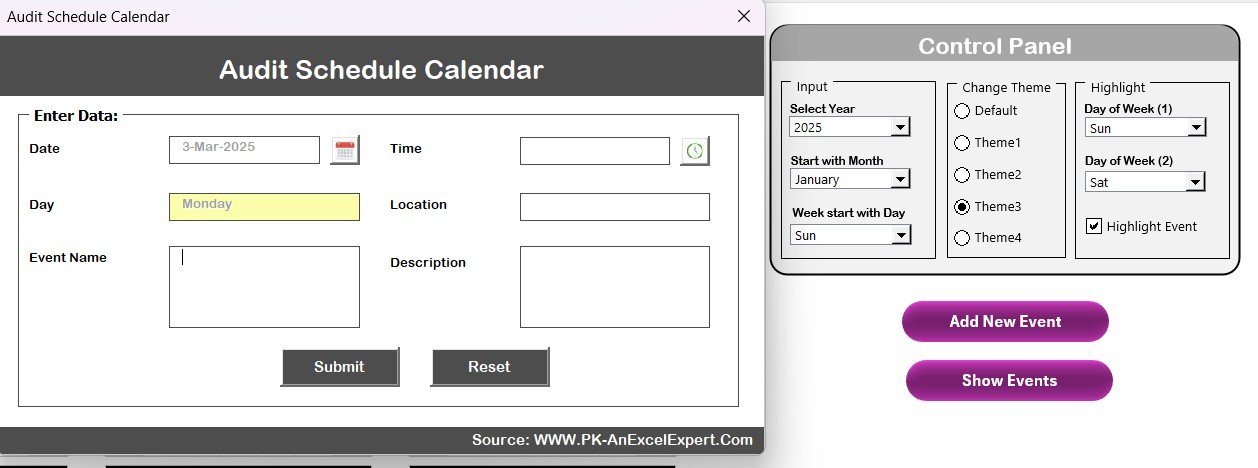
Click to Audit Schedule
Show Event Button: This button allows you to view the details of any event by simply clicking on the selected date.
3. Monthly View Sheet Tab: A Focused Look at One Month
The Monthly View sheet provides a more detailed look at a specific month. You can select any month and year, and the sheet will automatically display the relevant calendar.
- Add New Event Button: Similar to the Annual View, this button allows you to add a new event to any date on the calendar.
- Show Event Button: View the list of events for the selected date, with the option to display additional events if more than one is scheduled.
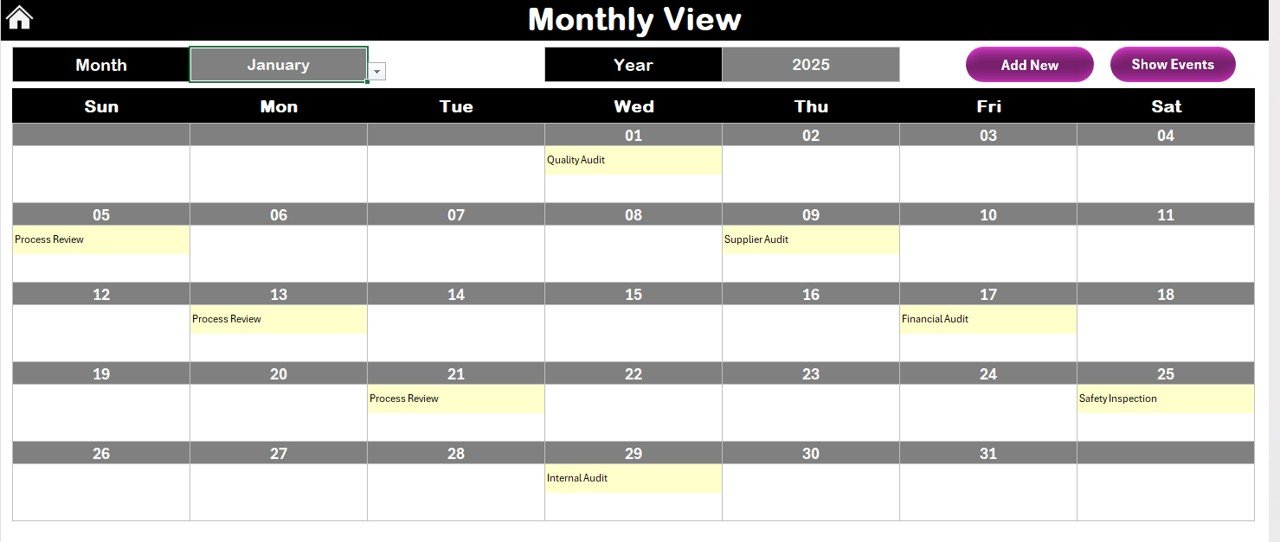
Click to Audit Schedule
4. Daily View Sheet Tab: A Detailed Schedule for Specific Dates
In the Daily View sheet, you can manage events based on specific date ranges. Simply input your desired date range (start and end dates), and click on the Refresh button to view all events within that period.
- Add New Event Button: Add new events to the selected date range using this button.
- View Event List: See a detailed list of all events scheduled for the chosen date range.

Click to Audit Schedule
5. Events Sheet Tab: The Database of All Events
The Events Sheet is where all your events are stored. Here, you can manage and modify event details, ensuring that you keep everything up-to-date.
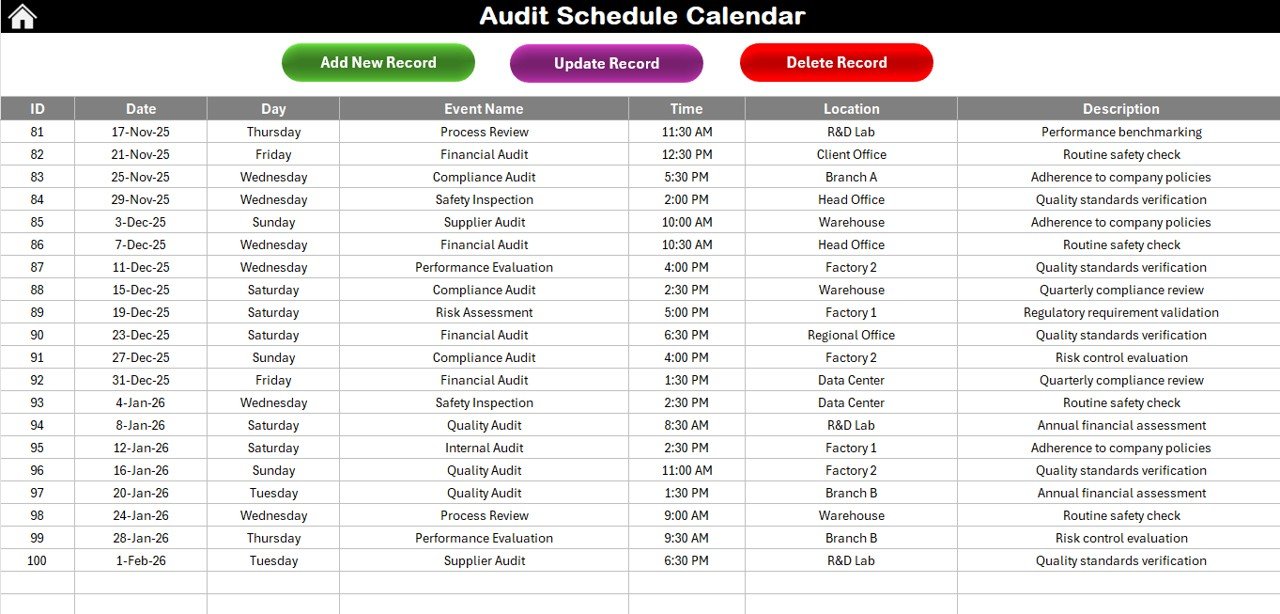
Click to Audit Schedule
Event Details: Each event includes essential information like:
- ID: Automatically generated for each new event.
- Date: The specific date the event takes place.
- Day: The day of the week for that event (e.g., Monday, Tuesday).
- Event Name: The title of the event.
- Time: The time when the event will occur.
- Location: Where the event is happening.
- Description: A brief description of the event.
Buttons:
- Add New Record: Use this button to add a new event by filling out the event form.
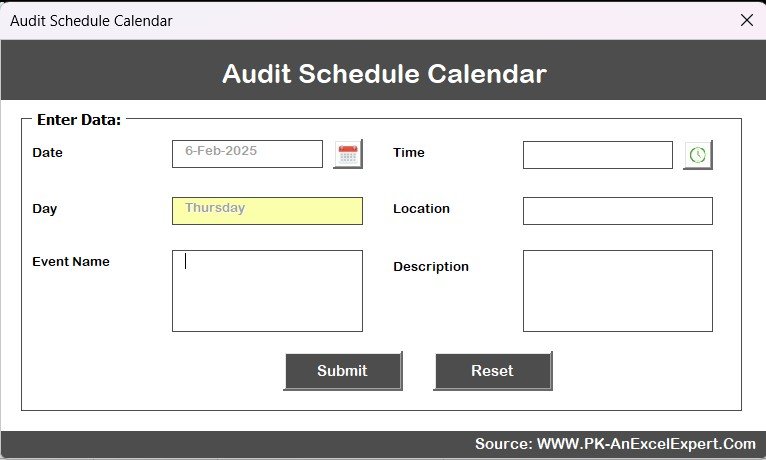
Click to Audit Schedule
- Update Existing Record: Modify existing events by selecting their ID and clicking this button.
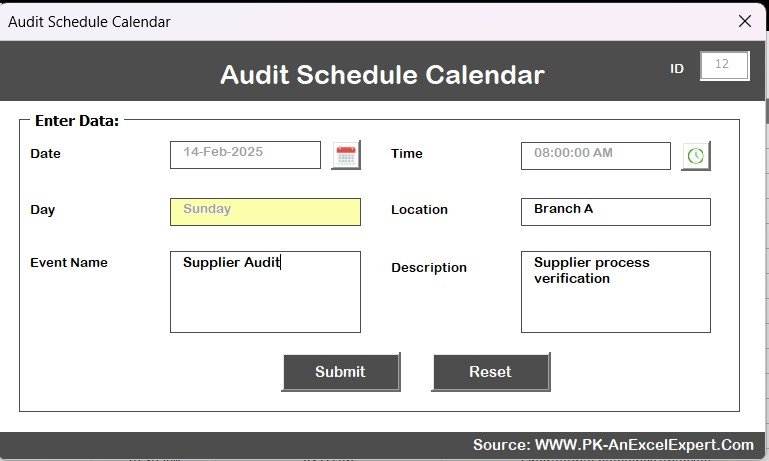
Click to Audit Schedule
- Delete Record: Remove events from the database with ease.
Advantages of Using the Audit Schedule Calendar in Excel
There are numerous benefits to using this Audit Schedule Calendar. Here are some key advantages:
- Centralized Event Management: With the Audit Schedule Calendar, you can store and manage all your events in one place. Whether it’s audit dates, meetings, or other important events, you’ll never miss a thing. The database sheet ensures that all event information is accessible and easy to update.
- Customizability for Your Needs: One of the standout features is the customization options. You can select different themes, highlight specific days of the week, and even highlight particular events. This makes it easy to adapt the calendar to suit your business or personal needs.
- User-Friendly Interface: The template is designed to be intuitive. The control panel, navigation buttons, and form-based event entry make managing the calendar a breeze, even for beginners.
- Efficient Time Management: By providing annual, monthly, and daily views, the calendar allows you to quickly see your upcoming events and audits. This helps in planning and organizing tasks efficiently, which is crucial for productivity.
- Event Tracking and History: With the events sheet, you can track and store the history of all past events. This is helpful for reference and analysis, especially for audits or recurring events.
Opportunity for Improvement in the Audit Schedule Calendar
While the Audit Schedule Calendar in Excel is a powerful tool, there is always room for improvement. Here are a few suggestions to enhance its functionality:
- Integration with Other Tools: While the calendar works well within Excel, integrating it with other tools (such as Google Calendar or Outlook) could make it even more versatile and accessible from multiple devices.
- Cloud Syncing: Allowing users to sync the calendar across different devices and share it with others in real-time could increase collaboration and make it easier to work with teams.
- More Automation Features: Adding automation features, such as reminders or alerts for upcoming events, could make this tool even more efficient in managing deadlines.
- Mobile Compatibility: Creating a mobile version or optimizing the calendar for mobile viewing would make it easier for users to manage their schedules on the go.
Best Practices for Using the Audit Schedule Calendar in Excel
To make the most out of the Audit Schedule Calendar, follow these best practices:
- Use Themes for Better Visibility: Select appropriate themes for different types of events. For example, you could use a specific color to mark important audit dates, or use another theme for regular meetings.
- Update Events Regularly: Make sure to keep the calendar updated. As your events change or new events arise, quickly add them to ensure the calendar remains accurate.
- Utilize Highlighting Features: Use the highlight function to mark weekends, holidays, or key dates that need attention. This will help you quickly locate critical events on the calendar.
- Set Event Reminders: Although Excel doesn’t natively support reminders, you can set up alerts or use conditional formatting to remind you of upcoming events. This will help you stay on top of important tasks.
Frequently Asked Questions (FAQs) about the Audit Schedule Calendar in Excel
1. How do I add a new event to the calendar?
To add a new event, select the date on the calendar, click the “Add New Event” button, and fill out the event details in the form that appears.
2. Can I customize the calendar theme?
Yes! The Audit Schedule Calendar allows you to select from five different themes to apply across the workbook, giving you the flexibility to match your preferred style.
3. Is this calendar only for audits?
While the calendar is designed for audits, you can use it for any type of event, including meetings, appointments, and deadlines.
4. Can I update or delete existing events?
Yes, you can update or delete events by selecting their ID in the events sheet and making the necessary changes.
5. How do I navigate between different views?
The Home Sheet includes buttons to navigate directly to the Annual View, Monthly View, Daily View, and Events Sheet, making it easy to switch between different views of your schedule.
Conclusion
The Audit Schedule Calendar in Excel is a powerful tool designed to help you stay organized and efficiently manage your events. Whether you’re planning audits or other important events, this template provides a centralized, customizable, and user-friendly way to track your schedule. By following the best practices outlined above, you can make the most of this template and keep all your events in check. Happy organizing.
Visit our YouTube channel to learn step-by-step video tutorials
